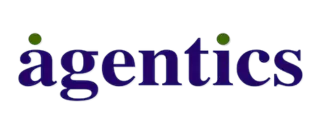
7 Key Insights on LLM vs NLP for Sales Directors
GeneralOverview
This article delves into the critical distinctions between Large Language Models (LLMs) and Natural Language Processing (NLP), specifically addressing their implications for sales directors. While NLP excels in specific applications such as sentiment analysis, LLMs present a more expansive range of capabilities and adaptability. This versatility makes LLMs particularly well-suited for intricate language tasks, significantly enhancing client interactions—a vital component for driving sales performance. Understanding these differences is imperative for sales leaders aiming to leverage advanced AI solutions to boost their strategies and outcomes.
Introduction
Understanding the dynamic landscape of artificial intelligence is crucial for sales directors seeking to elevate their strategies. The emergence of Natural Language Processing (NLP) and Large Language Models (LLMs) presents businesses with exceptional opportunities to enhance client engagement and operational efficiency.
However, the distinction between these two technologies raises critical questions:
- How can directors effectively leverage these tools to drive sales and cultivate customer relationships?
- Delving into the insights on LLM versus NLP not only reveals their transformative capabilities but also highlights the challenges and considerations accompanying their implementation.
Agentics: Custom AI Communication Solutions for Enhanced Efficiency
Agentics stands at the forefront of developing customised AI communication solutions that significantly streamline business processes and enhance operational efficiency. By harnessing advanced AI technologies, this agency empowers organisations to automate routine tasks, elevate client interactions, and optimise workflows. Their offerings include:
- Voice AI Agents, adept at managing inbound and outbound calls with natural-sounding speech and real-time responses
- Text AI Agents, which engage users through chat, SMS, or messaging apps
These solutions are meticulously designed to facilitate seamless interactions and boost productivity. Notably, companies that have integrated AI into their communication strategies report an impressive 44% increase in productivity and a 30% enhancement in client satisfaction. This commitment to delivering tailored solutions positions Agentics as a leader in the AI communication field, making it an essential partner for directors aiming to modernise their communication methods and achieve measurable outcomes.
Natural Language Processing (NLP): Core Concepts and Applications
Natural Language Processing (NLP) is a pivotal branch of artificial intelligence, and understanding LLM vs NLP is essential for facilitating seamless interaction between computers and humans through natural language. This technology empowers machines to comprehend, interpret, and generate human language effectively. Key applications of NLP—such as sentiment analysis, chatbots, and automated client support systems—play a crucial role in modern business operations.
For commercial directors, leveraging NLP can significantly enhance client engagement by enabling personalised interactions and extracting actionable insights from client data. This capability not only fosters stronger relationships with clients but also drives improved sales performance. Current trends indicate that over 80% of marketers are integrating AI into their processes, underscoring the growing reliance on LLM vs NLP technologies to automate client interactions and elevate content quality. As organisations increasingly embrace NLP solutions, they can anticipate a marked improvement in customer satisfaction and operational efficiency, ultimately securing a competitive edge in the marketplace.
Large Language Models (LLMs): Transformative Capabilities in AI
Large Language Models represent a remarkable advancement in artificial intelligence, demonstrating the ability to comprehend and generate human-like text from extensive datasets. When considering LLM vs NLP, it is evident that large language models excel across a spectrum of tasks, including:
- Text generation
- Summarization
- Translation
Unlike traditional NLP models, their adeptness at understanding context and linguistic nuances renders them indispensable in commerce and marketing, where personalised communication is paramount. Companies utilising large language models have reported a 22% increase in ad engagement and a 28% improvement in financial prediction accuracy, underscoring their effectiveness in enhancing client interactions.
By integrating large language models into their operational strategies, business leaders can refine communication processes and boost customer engagement, ultimately driving improved business outcomes. To fully leverage these advantages, it is essential to adopt effective chatbot design principles and user-centric AI strategies, which can revolutionise sales approaches and elevate overall business communication.
Key Differences Between NLP and LLMs: A Comparative Overview
The comparison of LLM vs NLP reveals that both are integral to language processing, yet they exhibit significant differences in capabilities and applications. NLP is primarily focused on specific, well-defined tasks such as sentiment analysis and text classification, often employing smaller models or rule-based systems. This specialisation makes NLP efficient and cost-effective for structured tasks, particularly in sectors like finance and healthcare, where rule-based processing is predominant.
Conversely, large language models are engineered to tackle a broader spectrum of tasks, leveraging deep learning methods to generate coherent and contextually relevant text. Their adaptability allows large language models to excel in complex scenarios, making them especially advantageous in dynamic commercial environments where responsiveness and flexibility are paramount. For instance, large language models can craft customised marketing materials, respond to client inquiries with nuanced understanding, and assist in code generation for sales applications, significantly enhancing productivity.
Research demonstrates that in the LLM vs NLP debate, large language models surpass traditional NLP models in tasks that necessitate deep contextual comprehension, achieving remarkable accuracy in sentiment analysis and text classification. This capability is vital for managers aiming to harness AI for improved customer engagement and operational efficiency. As organisations increasingly adopt AI-driven solutions, the demand for large language models is on the rise, highlighting the differences in capabilities between LLM vs NLP, especially in their ability to adapt to diverse tasks with minimal retraining—unlike conventional NLP systems that require extensive manual fine-tuning.
In conclusion, while NLP remains a valuable asset for structured tasks, large language models provide superior adaptability and performance in intricate language tasks, establishing them as essential components of contemporary sales strategies.
NLP Applications: Enhancing Customer Engagement and Communication
NLP applications are crucial for enhancing client engagement and communication. Chatbots powered by NLP deliver instant responses to client inquiries, significantly boosting satisfaction and reducing response times by as much as 50%.
For example, companies leveraging advanced AI chatbots have reported an impressive 83% autonomous query resolution rate, leading to improved client interactions. Furthermore, sentiment analysis tools empower sales teams to assess client emotions and preferences, fostering more personalised and effective communication.
By integrating NLP solutions, sales leaders can cultivate stronger relationships with clients, ultimately driving revenue growth and fostering loyalty. Organisations like Bank of America and Starbucks have successfully implemented chatbots, achieving significant reductions in response times, showcasing the potential of these technologies in modern marketing strategies.
LLM Applications: Driving Innovation in Sales and Marketing
Large linguistic models are revolutionising commerce and promotion by facilitating innovative applications that significantly enhance client interactions. For instance, these models can generate customised marketing materials in bulk, enabling companies to connect efficiently with their target audiences. By analysing vast amounts of client data, large language models identify patterns and preferences that inform marketing strategies and product development. This capability empowers sales directors to design more engaging and relevant customer experiences, ultimately driving higher conversion rates and boosting revenue.
Recent data indicates that:
- 67% of organisations are leveraging generative AI products powered by large language models to enhance their content creation and human language interactions.
- These models have demonstrated a 22% increase in ad engagement, underscoring their effectiveness in capturing consumer attention.
Marketing experts emphasise the importance of personalised content, noting that large language models streamline the content creation process, allowing for tailored messaging that resonates with individual consumers.
As LLMs continue to advance, their capacity to produce high-quality, SEO-optimised content will further empower businesses to maintain a consistent brand voice while conserving time and resources. This evolution in personalised marketing content generation not only boosts customer satisfaction but also positions companies for success in an increasingly competitive landscape.
Limitations of NLP: Challenges to Consider in Implementation
NLP presents substantial benefits, yet in the context of LLM vs NLP, it also introduces significant challenges that directors must adeptly navigate. A primary concern lies in the dependency on high-quality training data; subpar data can lead to inaccurate outputs and misinterpretations, ultimately undermining decision-making processes.
Moreover, when comparing LLM vs NLP models, it is evident that they frequently struggle to grasp context, particularly during complex or nuanced interactions. For instance, only 1.4% of U.S. businesses are currently utilising or testing NLP, reflecting a cautious approach to adopting this technology. Conversely, businesses that have successfully implemented solutions in the debate of LLM vs NLP have prioritised rigorous data management and model training, effectively mitigating these issues.
This investment in quality data and training is crucial for enhancing the effectiveness of NLP applications in commerce, particularly in the context of LLM vs NLP, enabling organisations to harness these technologies to their fullest potential. As one data scientist aptly noted, “The quality of training data is paramount; without it, even the most advanced models can falter.”
In contrast, AI chat systems are revolutionising marketing tactics by automating client interactions and providing prompt responses to inquiries, thereby improving client engagement and assisting potential buyers throughout their purchasing journey. AI chat facilitates continuous communication, addressing inquiries at any time—an essential component for maintaining client engagement.
Currently, 63% of retailers are leveraging AI to enhance client interactions, underscoring the growing significance of this technology. Addressing these challenges is imperative for organisations aiming to capitalise on the potential of NLP while understanding the differences between LLM vs NLP in their marketing strategies, and also recognising the transformative advantages of AI chat.
Challenges of LLMs: Navigating Implementation Hurdles
Implementing large language models involves navigating significant challenges in the discussion of LLM vs NLP that sales directors must skillfully address. A primary concern is the computational cost associated with training and deploying these models, which can be prohibitively high for smaller organisations. For instance, training models like GPT-3 can demand several million dollars due to extensive computational resources and high-quality data requirements. Moreover, large language models require significant quantities of varied and high-grade data to function efficiently, which can be both expensive and time-intensive to obtain. Ensuring data privacy and compliance adds another layer of complexity to their deployment, as organisations must adhere to stringent regulations while managing sensitive information.
Sales directors should proactively address these challenges by developing clear strategies for data management, optimising resource allocation, and considering the long-term financial implications of the debate between LLM vs NLP implementation. By doing so, they can better position their organisations to leverage the transformative potential of LLMs while considering the differences in LLM vs NLP and mitigating associated risks. At Agentics, we advocate for a tailored approach through our DARE to Deploy AI™ process, ensuring that every deployment is custom designed to meet the unique needs of your business. This strategic framework not only addresses the high costs but also emphasises the importance of aligning AI solutions with your specific goals and challenges.
Additionally, leveraging AI chat tools can significantly enhance client engagement by automating interactions, providing immediate responses, and enabling 24/7 communication, which supports prospective buyers throughout their purchasing journey. Embrace these technologies to transform your marketing approaches and drive success.
Cost Comparison: Evaluating NLP vs LLM for Budget-Conscious Decisions
Cost represents a pivotal consideration for sales directors evaluating the differences in LLM vs NLP technologies. Typically, NLP solutions are more budget-friendly, requiring less computational power and enabling implementation with smaller, specialised datasets. This accessibility is particularly beneficial for organisations with limited resources. In contrast, large language models, while offering advanced capabilities such as nuanced language understanding and creative text generation, incur significantly higher costs due to their resource-intensive nature and the necessity for extensive datasets, often ranging from hundreds of gigabytes to terabytes. For instance, hosting an open-source Llama3 model on AWS can cost at least $23,924 USD per month, assuming 24/7 uptime.
Organisations must carefully assess the potential return on investment (ROI) against the costs associated with each technology. While implementing an LLM can enhance user interaction and operational efficiency, the initial expenditure can be substantial, occasionally amounting to millions of dollars in computing resources and data preparation. Conversely, NLP solutions can deliver effective results for structured tasks such as sentiment analysis and text classification without the same level of financial commitment.
Examples of budget-conscious decisions in AI technology adoption include selecting NLP for specific applications where its capabilities suffice, thereby conserving resources for more complex needs that may later necessitate LLM integration. Financial analysts emphasise the importance of aligning AI investments with strategic business objectives, ensuring that every dollar spent contributes to measurable outcomes. As organisations navigate the complexities of AI budgeting, understanding the distinct financial implications of LLM vs NLP is crucial for making informed decisions that drive success. Additionally, combining NLP and LLM can yield optimal results, with NLP managing pre-processing and LLM handling complex cognitive functions.
Future Trends in NLP and LLMs: Preparing for the Next Wave of AI Innovation
As AI technology advances, several key trends in LLM vs NLP are emerging that business leaders must closely monitor. A prominent trend is the integration of multimodal AI systems, which synergize text, audio, and visual data to significantly enhance communication capabilities. This integration empowers businesses to offer tailored recommendations and engage in personalised conversations, ultimately improving customer satisfaction and operational efficiency.
AI chat systems are transforming marketing approaches by automating client interactions and providing prompt replies to inquiries. This not only improves client involvement but also assists potential buyers throughout their buying journey. Furthermore, the focus on ethical AI practises is intensifying, as organisations prioritise fairness and transparency in their AI applications. Bernard Marr emphasises that “the multimodal AI market presents a transformative opportunity across industries owing to technological advancements.”
By staying informed about these advancements, including the benefits of AI chat for continuous communication and data gathering, sales directors can strategically position their teams to leverage the latest innovations. This ensures they maintain a competitive edge in an increasingly dynamic market. The time to act is now; embrace these transformative trends and empower your organisation to thrive in the future.
Conclusion
The exploration of LLM versus NLP for sales directors unveils the transformative potential of these technologies in enhancing business communication and client engagement. Both NLP and large language models are instrumental in facilitating human-computer interaction, yet their distinct capabilities cater to different needs within sales strategies. Grasping these differences empowers directors to make informed decisions that align with their organisational goals.
Key insights from the article illuminate the advantages of integrating AI communication solutions, such as those provided by Agentics, which significantly enhance operational efficiency and client satisfaction. The comparative analysis reveals that while NLP excels in structured tasks, large language models offer superior adaptability and performance in complex scenarios, ultimately driving innovation in marketing and sales. Moreover, the challenges and cost considerations associated with each technology underscore the necessity for strategic planning in AI implementation.
As the AI landscape continues to evolve, embracing these advancements is crucial for maintaining a competitive edge. Sales directors are urged to leverage the unique strengths of both NLP and LLMs to enrich customer interactions and streamline processes. By remaining attuned to future trends and innovations in AI, organisations can position themselves for success and fully harness the transformative potential of these technologies.
Frequently Asked Questions
What is Agentics and what solutions do they offer?
Agentics is a company that develops customised AI communication solutions aimed at streamlining business processes and enhancing operational efficiency. Their offerings include Voice AI Agents for managing calls and Text AI Agents for engaging users through various messaging platforms.
How do Agentics’ AI solutions improve productivity and client satisfaction?
Companies that have integrated Agentics’ AI communication solutions report a 44% increase in productivity and a 30% enhancement in client satisfaction, indicating significant improvements in operational efficiency and client interactions.
What is Natural Language Processing (NLP) and why is it important?
Natural Language Processing (NLP) is a branch of artificial intelligence that enables machines to understand, interpret, and generate human language. It is crucial for facilitating seamless interactions between computers and humans, enhancing client engagement, and extracting actionable insights from client data.
How can NLP benefit commercial directors?
By leveraging NLP, commercial directors can enhance client engagement through personalised interactions and improve sales performance by gaining insights from client data, which fosters stronger relationships and drives customer satisfaction.
What role do Large Language Models (LLMs) play in AI?
Large Language Models (LLMs) are advanced AI systems capable of understanding and generating human-like text. They excel in tasks like text generation, summarization, and translation, making them valuable for personalised communication in commerce and marketing.
What benefits have companies experienced by using LLMs?
Companies utilising Large Language Models have reported a 22% increase in ad engagement and a 28% improvement in financial prediction accuracy, demonstrating their effectiveness in enhancing client interactions and overall business outcomes.
What should businesses consider when integrating AI communication solutions?
To fully leverage the advantages of AI communication solutions, businesses should adopt effective chatbot design principles and user-centric AI strategies, which can revolutionise sales approaches and enhance overall business communication.
Enjoyed this post? Share it with your network!
10 Best AI Sales Tools to Boost Your Team’s Performance

Discover the top 10 best AI sales tools to enhance team performance and drive revenue growth.
Mastering Test Call Numbers: A Step-by-Step Guide for Sales Directors

Elevate your communication with our guide on mastering test call numbers for sales success.
7 Ways Automated Outbound Calls Boost Sales Performance

Discover how automated outbound calls enhance sales performance and streamline communication.
